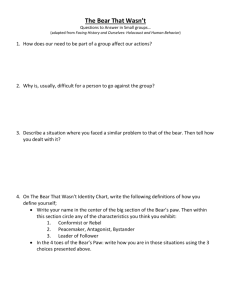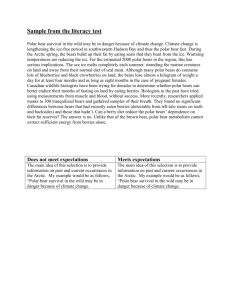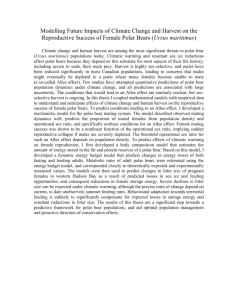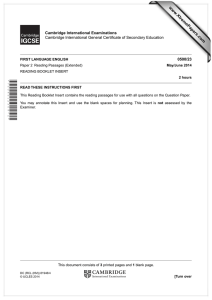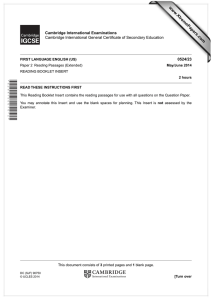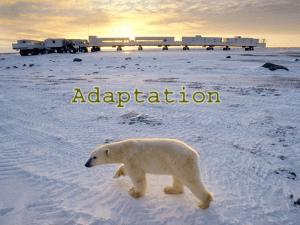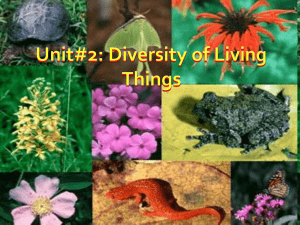Fact-finding: List three facts that you learned in this article. 1.
advertisement
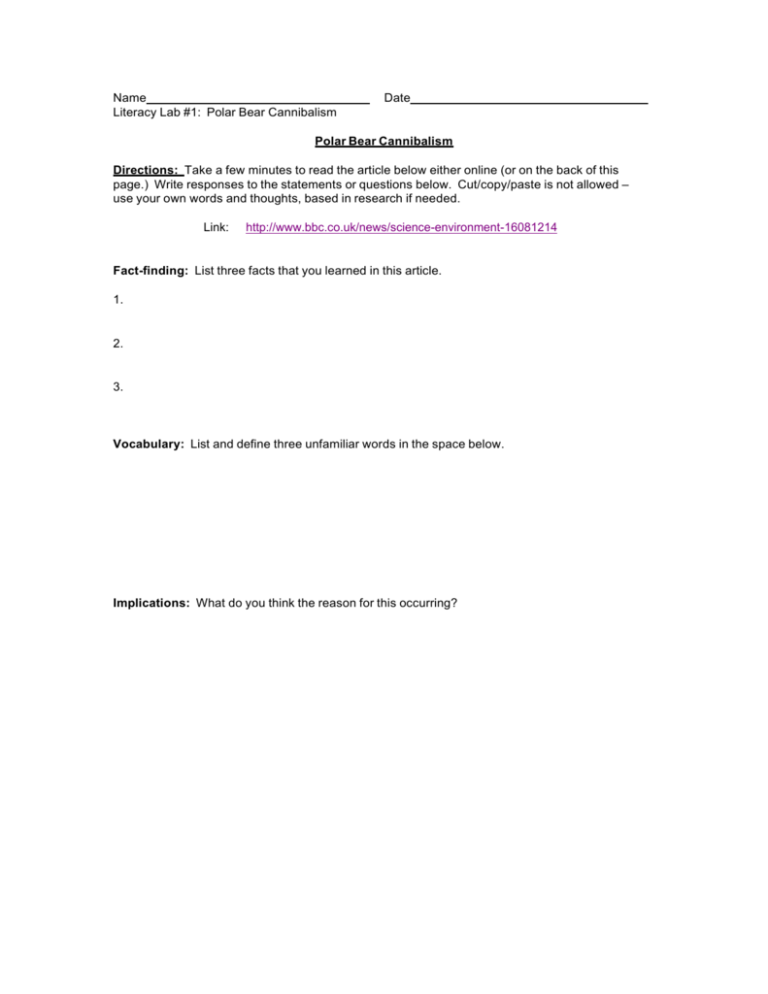
Name Literacy Lab #1: Polar Bear Cannibalism Date Polar Bear Cannibalism Directions: Take a few minutes to read the article below either online (or on the back of this page.) Write responses to the statements or questions below. Cut/copy/paste is not allowed – use your own words and thoughts, based in research if needed. Link: http://www.bbc.co.uk/news/science-environment-16081214 Fact-finding: List three facts that you learned in this article. 1. 2. 3. Vocabulary: List and define three unfamiliar words in the space below. Implications: What do you think the reason for this occurring? SCIENCE & ENVIRONMENT 8 December 2011 Last updated at 04:56 ET Polar bear 'cannibalism' pictured By Jonathan Amos Science correspondent, BBC News, San Francisco It is an image that is sure to shock many people. An adult polar bear is seen dragging the body of a cub that it has just killed across the Arctic sea ice. Polar bears normally hunt seals but if these are not available, the big predators will seek out other sources of food - even their own kind. The picture was taken by environmental photojournalist Jenny Ross in Olgastretet, a stretch of water in the Svalbard archipelago. "This type of intraspecific predation has always occurred to some extent," she told BBC News. "However, there are increasing numbers of observations of it occurring, particularly on land where polar bears are trapped ashore, completely food-deprived for extended periods of time due to the loss of sea ice as a result of climate change." The journalist was relating the story behind her pictures here at the 2011 American Geophysical Union (AGU) Fall Meeting, the largest annual gathering of Earth scientists. A paper describing the kill event in July 2010 has just been published in the journal Arctic. It is co-authored with Dr Ian Stirling, a polar bear biologist from Environment Canada. Ross had approached the adult in a boat. She could see through her telephoto lens that the animal had a meal, but it was only when she got up close that she realised it was a juvenile bear. The kill method used by the adult was exactly the same as polar bears use on seals - sharp bites to the head. "As soon as the adult male became aware that a boat was approaching him, he basically stood to attention - he straddled the young bear's body, asserting control over it and conveying 'this is my food'," the journalist recalled. "He then picked up the bear in his jaws and, just using the power of his jaws and his neck, transported it from one floe to another. And eventually, when he was a considerable distance away, he stopped and fed on the carcass." Ross said there was another bear in the area and she speculated that it might have been the mother of the dead juvenile. Olgastretet is a passage of water that divides the two main islands of Svalbard. Traditionally, it has been an area that has stayed ice-covered throughout the year. But the recent dramatic retreat of Arctic sea ice in summer months has seen open water appear in the area for extended periods. And without their customary platform on which to hunt seals, bears have gone looking for alternative sources of food, says Ross. "On land, they're looking for human garbage and human foods; they're starting to prey on seabirds and their eggs. "None of those alternative foods can support them, but they are seeking them out. "Predating another bear is a way to get food; it's probably a relatively easy way for a big adult male. And it seems that because of the circumstances of the loss of sea ice - that kind of behaviour may be becoming more common."



